Arthrosis of the knee joint (also called gonarthrosis) is a very common disease that has recently been discovered not only in older people but also in young people.
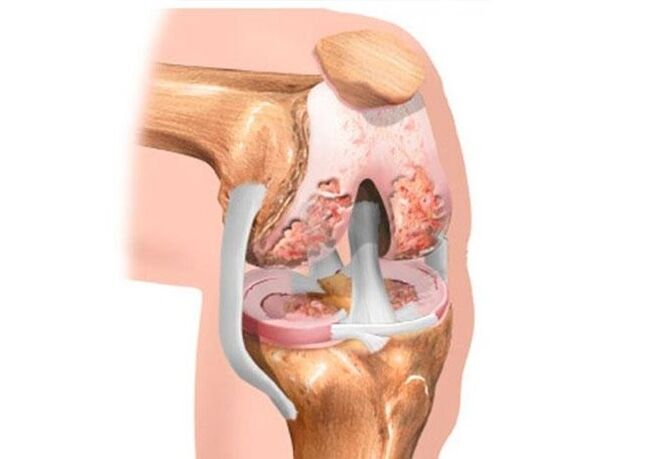
Pathology is one of the main reasons for patients' incapacity if they refuse to seek help from a traumatologist or orthopedist.
Let's look at why patients develop gonarthrosis of the knee joint, what its main signs are, how dangerous it is, and how effective the treatment of progressive knee destruction is.
The main factors in the emergence of this pathology
Joints are constantly exposed to significant stress. The knees are especially affected: they are forced to do significant physical work, which is why they wear out quickly. The deforming process is intensified by the fact that the legs are forced to support the body's weight.
This fact contributes even more so that the knees start to wear out and the cartilage tissue in the joint becomes thinner and degrades.
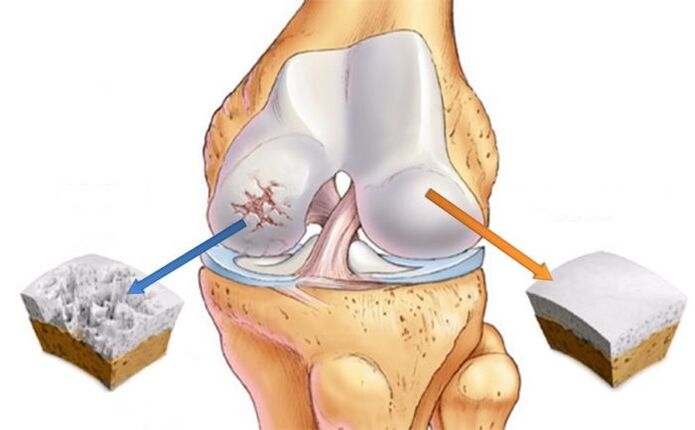
The following reasons can accelerate the pathological process in joints:
- Increased body weight of patients. In complete joint destruction occurs much faster and more intense. It has been proven that the disease in question in obese people occurs three times more often than in people of normal weight.
- Intense sports, due to which joints are constantly injured.
- Frequent fractures, previous injuries to the knee contribute to the patient's beginning to degenerate articular cartilage processes from a very young age.
- Anomalies in bone location - so-called valgus or varus deformities.
- Poor development of the knee ligament apparatus leads to frequent injuries, dislocations. Due to the lesions described, the patient develops arthrosis.
- Damage to the meniscus triggers the degenerative process of destruction of the knee.
- Constant stress leads to a deterioration in the health of the musculoskeletal system.
- Disruption of the body's metabolic processes due to a lack of nutrients and minerals (bones suffer more from a lack of calcium).
In addition, the following people belong to the risk group:
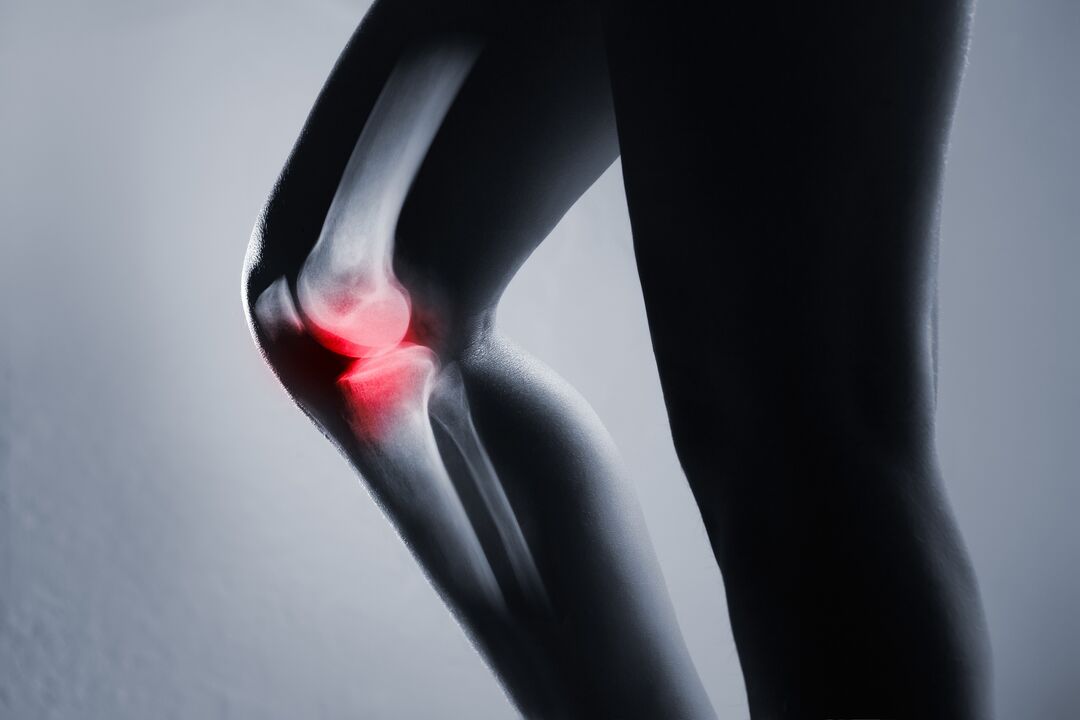
- all athletes;
- patients, regardless of gender, who have reached the 50-year mark;
- women who have started menopause;
- patients suffering from varicose veins;
- people with unfavorable heredity.
What are the degrees of the disease
The pathology in question develops gradually, very slowly. At first, it may not appear, and the patient is in no hurry to go to the doctor. However, the pathological process has already started and, if it is not interrupted in time, the functions of the lower limbs are gradually lost, which leads to the onset of disability.
So, in grade 1, the patient may notice that the leg gets tired, even if the load was small. Some mobility limitation of the knee joint is noticeable and a significant crack is heard during movement.
There are pronounced pains to begin with when the discomfort does not give rest, especially in the morning. After the patient "disperses", the discomfort gradually decreases, increasing again after sports activities. At this stage of disease development, there is no pronounced bone tissue deformation.
In grade 2, the pain gets worse. Walking is hampered because of this. Sometimes it becomes almost impossible for the patient to move normally and, even after a light load, a long rest is necessary. As the joint gap narrows, osteophytes grow into the bones and pathological fluid accumulates in the joint.
In grade 3, pain occurs not only during work, sports, but also in a state of complete rest. The knee deformity is very pronounced, which makes any movement difficult.
common symptoms of the disease
It is necessary to pay attention to the general symptoms of arthrosis of the knee joint:
- Pain. It does not appear suddenly, however, a slight discomfort can last for almost years. Stronger pain is caused by trauma.
- Knee deformation (maintains anterior shape).
- Accumulation of fluid in the intra-articular cavity. When its quantity exceeds certain values, the so-called Baker's cyst develops. A tight elastic object appears at the back of the knee. It is most noticeable when the joint is extended.
- Knee crunch is observed if the pathology is in the second, third stage. It is significantly different from what is seen in a healthy person when bending or extending the knee. The sound is felt as harsh and painful. Crushing sometimes interferes with active movements.
- Decrease in the normal range of motion in the joint. Usually, the patient is unable to bend, unfold the affected leg. He is able to bend it at a right angle, the posterior movements are accompanied by severe pain.
- Knee stiffness mainly occurs in stages 3. Sometimes patients can only walk with their limbs bent.
- Increased pain when the weather changes.
- Substantial thinning of the cartilage. Sometimes, in advanced cases, bone exposure is observed. X-ray of the knee shows a significant accumulation of osteophytes.
Arthrosis Varieties
Depending on the origin, arthrosis is either primary (proceeds as an independent disease) or secondary - a complication of existing pathologies. Depending on the location, the pathology is right, left and bilateral.
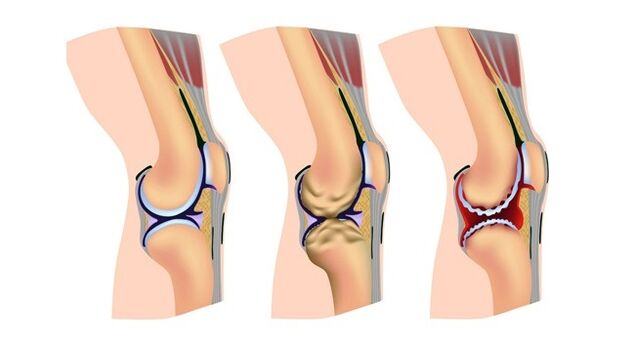
Based on the characteristics of the manifestation, the following types of the disease are distinguished.
- Deforming arthrosis is characterized by a chronic course, with irreversible changes in the joint.
- Patellofemoral arthrosis develops due to intense and prolonged physical exertion.
- Inflammatory arthrosis occurs due to a prolonged untreated inflammatory process in the joints.
- Dysplastic arthrosis develops due to congenital anomalies in the structure of the knee joint.
- Posttraumatic arthrosis arises as a result of frequent injuries to the musculoskeletal system.
- Metabolic arthrosis occurs with gout and other metabolic disorders.
- Post-infectious arthrosis occurs as a consequence of insufficiently treated inflammatory pathologies.
- The static form of the disease is detected when the knees are constantly exposed to increased pressure.
- If the cause of the knee injury is not established, experts speak of idiopathic osteoarthritis.
Characteristics of disease treatment

In the early stages of disease development, a rheumatologist and traumatologist are involved in treatment. If she went too far, the patient should see a surgeon. Finally, in some clinics, there is a limited specialist who treats joint disease - an arthrologist.
The scope of therapeutic measures depends on how far the disease has progressed. If it is possible to eliminate the cause of the condition in question in the early stages, then an almost permanent recovery can be achieved.
The goals of any therapy are complete elimination of pain, restoration of destroyed cartilage, and an increase in the range of active movement of the joint.
The course of drug treatment is exclusively selected by a physician. The patient cannot prescribe them himself, as this can contribute to further joint destruction. The main drugs are prescribed:
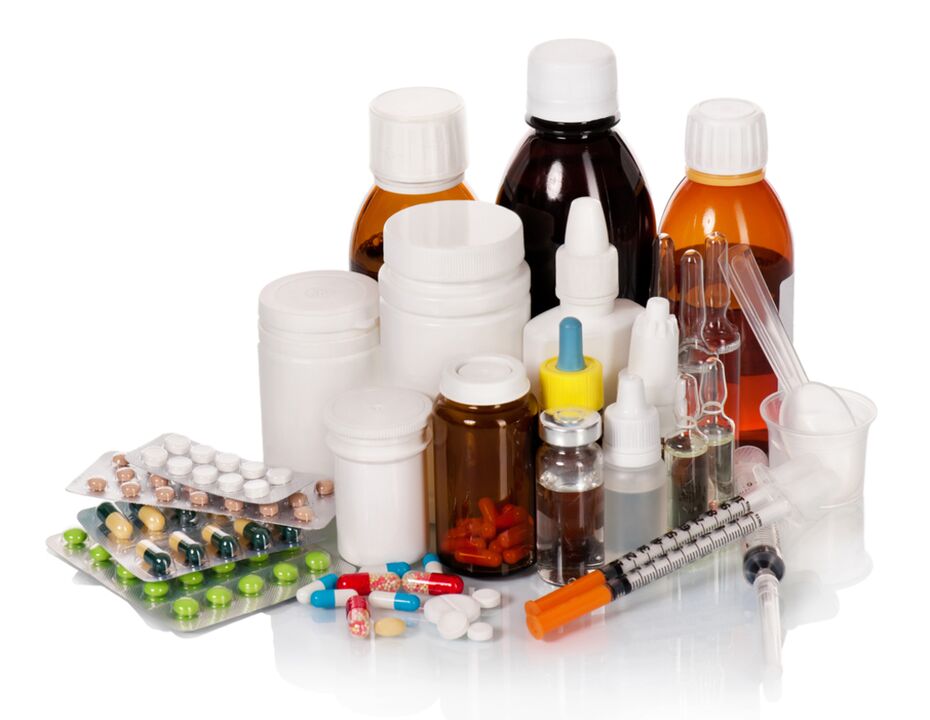
- Non-steroidal anti-inflammatory pills or ointments. Its action is aimed at relieving pain, inflammation in the affected area. Sometimes injections into the joint cavity may be prescribed.
- Products that improve blood circulation in the knee. These are muscle relaxants, antispasmodics. The latter relieves pain well.
- Products that restore articular cartilage, improve normal nutrition in it.
Blocking Novocaine helps relieve acute pain. The injection can be done from outside or inside the joint. The simplest and safest method is to administer the medicine from outside. With proper handling, the pain goes away almost immediately.
A potent NSAID-based ointment also helps to deal with pain. It must be remembered that you should not use strong drugs for a long time. Any medication, even the most effective one, can have side effects and cause allergic reactions. This means that self-medication for this serious illness is categorically prohibited.
Conservative treatment can be effective as long as the disease has not gone too far. In case of irreversible damage to the joint, surgical operation is indicated. The implantation of a metallic prosthesis is performed.
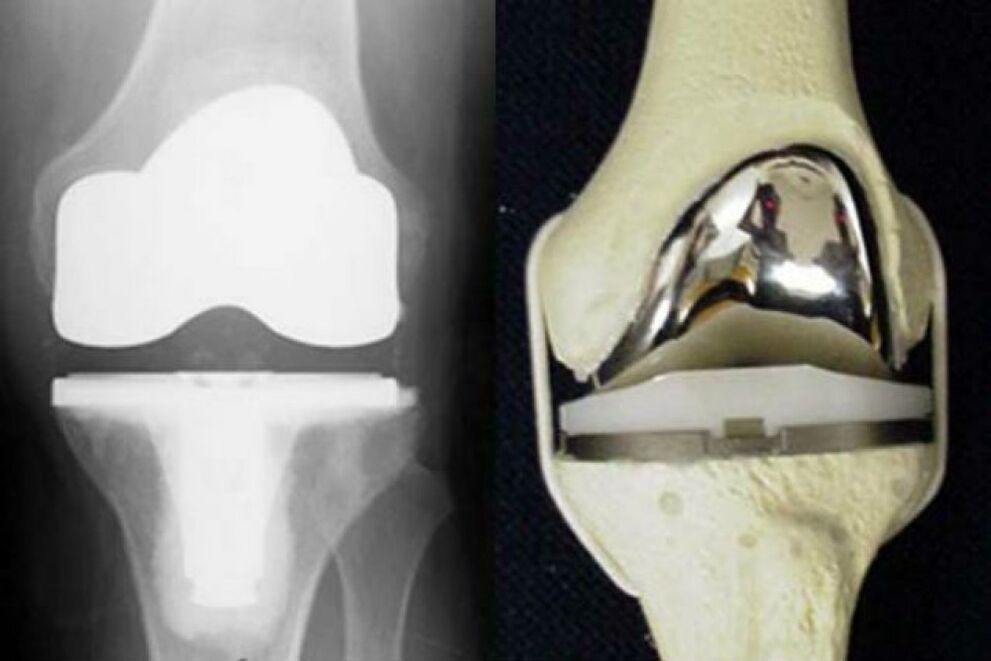
Currently, this is the only way to restore knee mobility. The disadvantages of these operations are the limited service life of the prosthesis and the high price.
In arthroscopy, all surgical procedures are performed through microscopic punctures in the joint. During the operation, the affected cartilage fragments, clots, etc. are removed from the joint. In stage 3 of the disease, the type of intervention described is ineffective.
To reduce the load, periarticular osteotomy is used. It is shown that it is done when the joint is not completely destroyed.
To unload the joint affected by the degenerative process, canes and orthotics are used.
The duration of treatment for the disease depends on many factors. The course of chondroprotective therapy can be quite long - six months or even longer, as their effect is very slow to manifest. A qualified healthcare professional can determine how long to take prescribed medications.
The use of chondroprotectors in the treatment of arthrosis
To relieve pain, doctors prescribe nonsteroidal anti-inflammatory drugs (NSAIDs).
However, even new generation NSAIDs cannot prevent the spread of the disease process. To reduce the intensity of joint degeneration and restore normal mobility, chondroprotectors are increasingly used.
Modern medicines in this group help to restore joint tissue. This is due to the chondroitin content in them. It is a natural component of cartilage. The constant intake of medicines from this group helps to restore you, improve your health.
Despite the wide range of medications offered, only a doctor can determine which is right for a patient. The injection of chondroprotectives is not shown to everyone, the drugs themselves are diluted in special solvents.
The intake of dietary supplements is indicated if the patient follows the rules of a balanced diet, taking other medications to support the joints.
The role of exercise therapy and physiotherapy in the treatment of gonarthrosis
With the described pathology, the patient is categorically contraindicated in a recumbent lifestyle. Physical activity for any disease of the musculoskeletal system is simply necessary for all categories of patients. Of course, it must be dosed; any exercise is performed exclusively under the supervision of a physician.
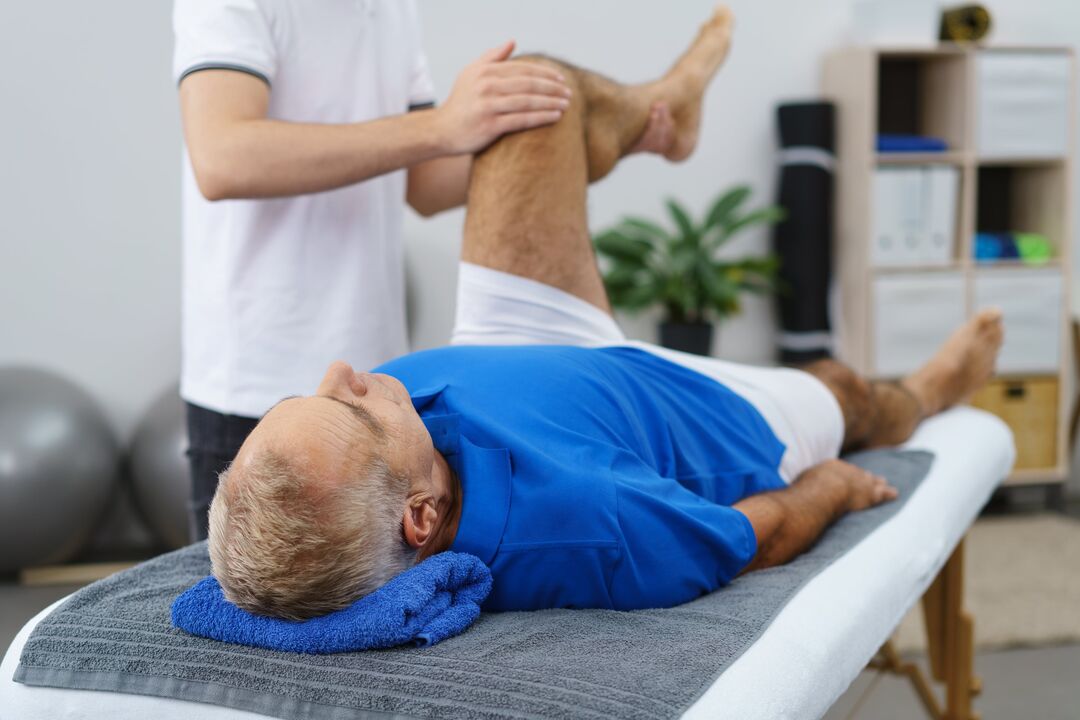
For each patient, a traumatologist or rehabilitation therapist individually selects special exercises. There is no need to think that different sets of classes that can be found on the Internet will serve all patients without exception.
For some they can be really useful, while for others they will do a lot of damage. All loads should be gentle, aiming at faster and more complete restoration of the function of the affected joints.
At home, a simple exercise is recommended: lying down, lift your leg, hold it for a few minutes and then lower it. It is harmless and can be performed even by patients with the third stage of the disease. Under the supervision of a doctor, exercises are performed to stretch the joint capsule. But if it causes pain, the execution must be stopped immediately.
Physiotherapeutic methods of treating an illness include:
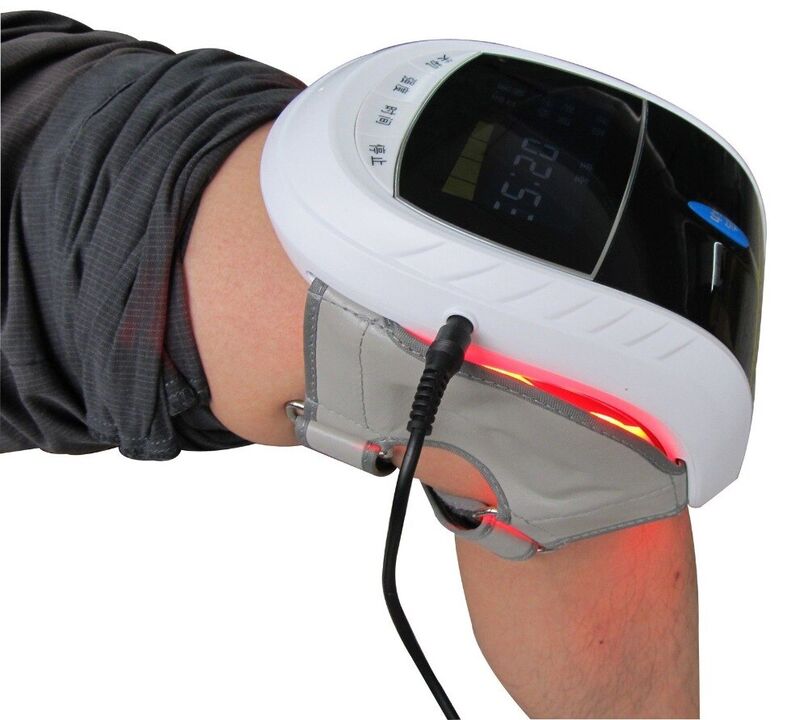
- massage (it is strictly forbidden to do this without the doctor's testimony);
- manual therapy (should be as gentle as possible, not causing discomfort);
- medical laser treatment;
- impact on reflex points using the best needles;
- heat or cold treatment (again, you don't need heat treatments at home);
- magnetic field treatment;
- phonophoresis;
- electrophoresis;
- paraffin therapy;
- treatment with ozokerite;
- moxibustion with wormwood.
Nutrition for gonarthrosis
Adequate nutrition is the basis for successful treatment of degenerative diseases of the musculoskeletal system. Due to an inadequately formulated diet, the patient may gain weight. Lack of vitamins, microelements aggravates the course of the pathology.
All people with gonarthrosis should increase the amount of vitamin and mineral fortified foods in their daily diet.
Nutritionists recommend closely monitoring the caloric content of foods. Fasting or extreme diets are strictly prohibited. They can harm, the body weight will increase even more.
It is imperative to ensure that breakfast is balanced. You need to eat at least five times a day. For snacks, it is recommended to use fruit, bread.
The following foods and dishes are excluded:

- sweet soda;
- fatty meals;
- semi-finished products;
- spices;
- dishes containing flavor and odor enhancers;
- fatty meats;
- fried foods;
- White cabbage;
- tomatoes and peppers;
- oranges, lemons;
- chocolate;
- bananas, grapes (they are very high in calories).
Cold meat and gelatin are helpful. They contain a lot of collagen, due to which bone is restored. Gelled meat is prepared so that it contains less fat so that its caloric content will decrease.
Protein sources for osteoarthritis sufferers can be dairy products - cheese, cottage cheese or kefir. It is very useful to consume legumes. Be sure to include nuts in the diet.
It is necessary to observe the drinking regime. As long as there are no associated kidney diseases, it is recommended to consume about 2 liters of water.
About alternative treatment of the disease
It must be remembered that traditional methods cannot replace the effective methods of official medicine. And therefore must be used in complex treatments, there can be no other therapy for this serious disease.
To relieve knee swelling, use regular soda. The fabric is moistened with soda mush and wrapped around the knee. Above, to maximize the thermal effect, it is advisable to attach a plastic bag. Store the prepared compress overnight.
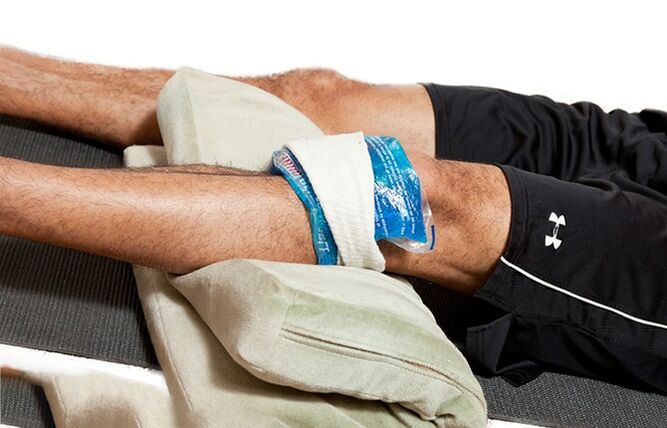
A similar compress is made with the addition of food vinegar. Parallel to the imposition of compresses, it is necessary to take acetylsalicylic acid tablets.
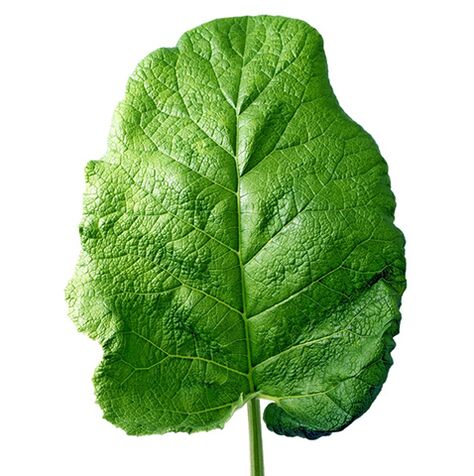
Burdock leaves are very useful for the knee. Before applying the leaves, it is advisable to lubricate the knee with vegetable oil. There needs to be several layers of sheets.
All this wrapped in a plastic bag. Birch leaf compresses are made in the same way.
Medicinal bile also relieves inflammation, swelling and pain. It is used in the form of warming compresses at night. Bile has virtually no side effects.
Treatment with honey is carried out in cases where the patient is not allergic to it. After the painful joint has been warmed with a heat pad, it should be lubricated with honey and a gentle massage given. After that, put burdock leaves on the knee.
gonarthrosis prevention
Preventing an illness is much easier than curing it. Prevention measures include:
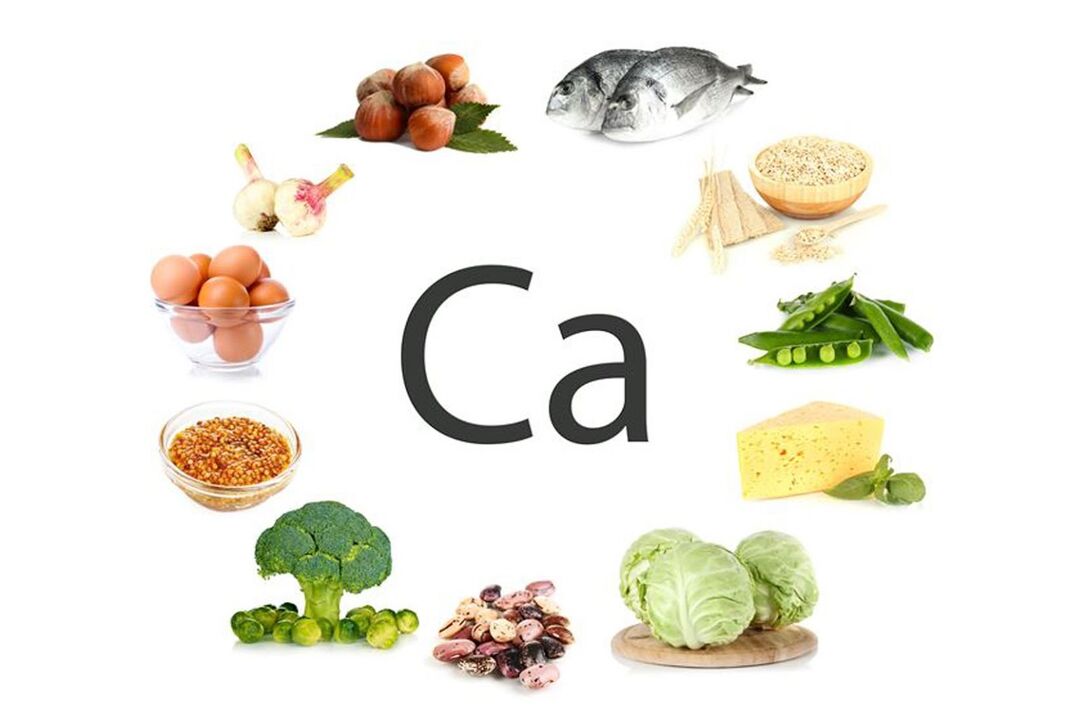
- high quality balanced nutrition using sufficient amounts of protein, vitamins and calcium;
- eradication of bad habits;
- the fight against being overweight;
- normalization of physical activity;
- prevention of joint injuries during sports or heavy physical work.
When the first symptoms of a problem appear, it is important to see a doctor right away. In the clinical consultation, it is possible to know which doctor is treating the gonarthrosis. It is advisable to have a complete medical examination to discover the cause of the disease's development.
Knee osteoarthritis is a serious disease: if ignored, there is a risk of disability and total immobility. To prevent this, you need to properly treat the affected joint. Therapeutic measures started early contribute to the almost complete remission of this pathology, helping to maintain high performance and quality of life.



















